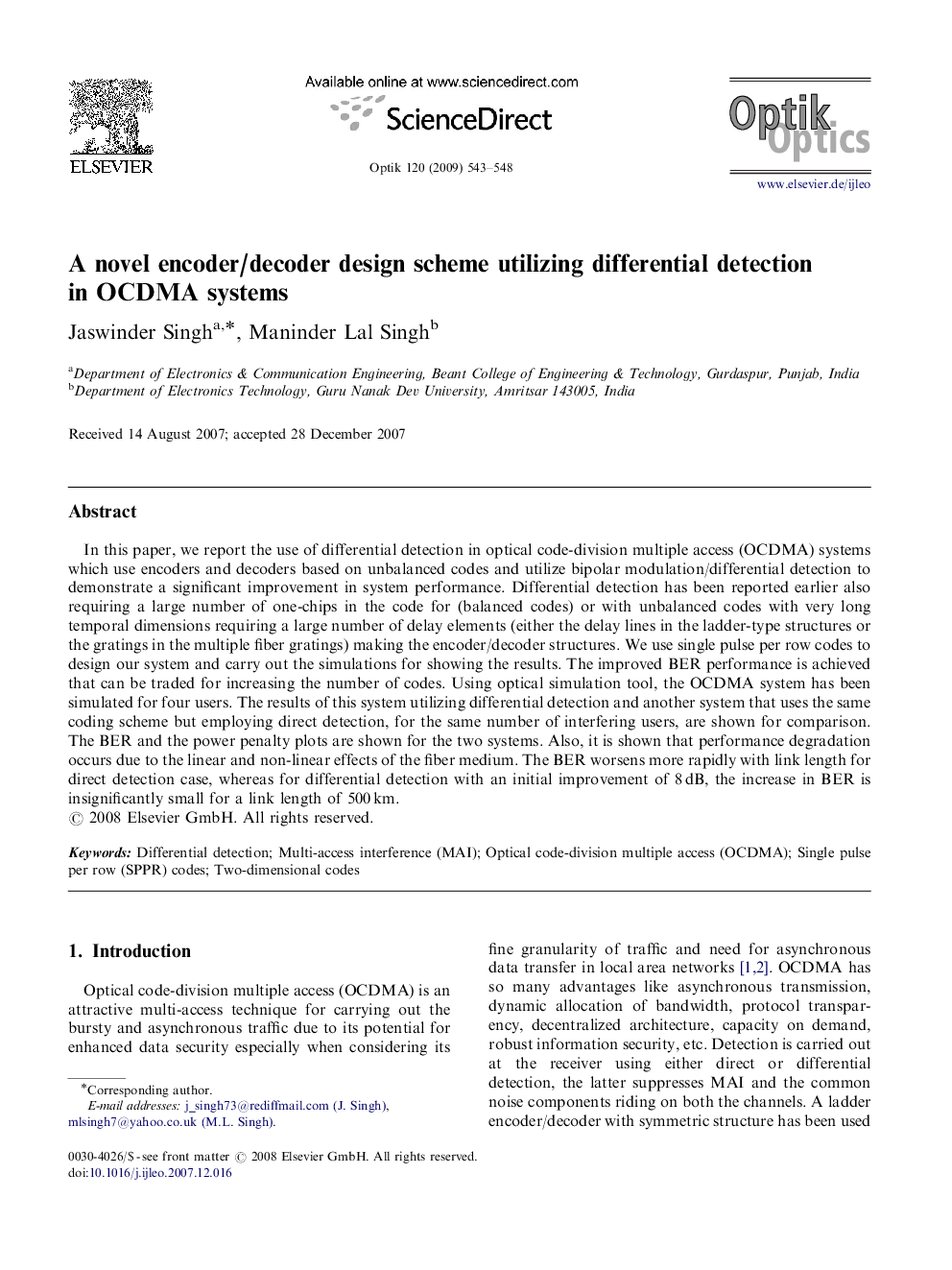| Article ID | Journal | Published Year | Pages | File Type |
|---|---|---|---|---|
| 852456 | Optik - International Journal for Light and Electron Optics | 2009 | 6 Pages |
In this paper, we report the use of differential detection in optical code-division multiple access (OCDMA) systems which use encoders and decoders based on unbalanced codes and utilize bipolar modulation/differential detection to demonstrate a significant improvement in system performance. Differential detection has been reported earlier also requiring a large number of one-chips in the code for (balanced codes) or with unbalanced codes with very long temporal dimensions requiring a large number of delay elements (either the delay lines in the ladder-type structures or the gratings in the multiple fiber gratings) making the encoder/decoder structures. We use single pulse per row codes to design our system and carry out the simulations for showing the results. The improved BER performance is achieved that can be traded for increasing the number of codes. Using optical simulation tool, the OCDMA system has been simulated for four users. The results of this system utilizing differential detection and another system that uses the same coding scheme but employing direct detection, for the same number of interfering users, are shown for comparison. The BER and the power penalty plots are shown for the two systems. Also, it is shown that performance degradation occurs due to the linear and non-linear effects of the fiber medium. The BER worsens more rapidly with link length for direct detection case, whereas for differential detection with an initial improvement of 8 dB, the increase in BER is insignificantly small for a link length of 500 km.
